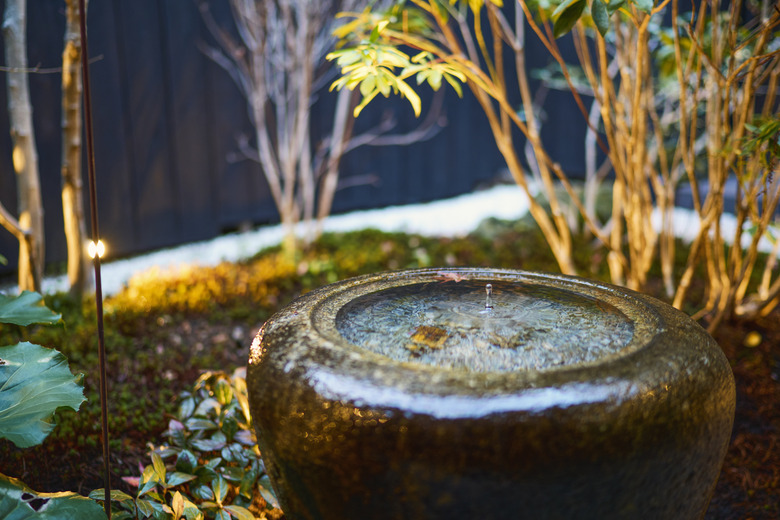How To Make The Water Blue In Your Fountain
We may receive a commission on purchases made from links.
While a large body of clean, deep ocean or sea water naturally takes on a bluish hue, the water in a fountain isn't deep enough to appear blue on its own. Making the water blue requires adding some form of a pond dye. Another dye-free option is to keep the water as is and paint the inside of the fountain blue to make the water appear blue.
Pond Dye Options
Pond Dye Options
A hint of blue makes any body of water seem clean, even if it's not a natural water source, such as a small pond or a decorative fountain. Pond supply stores sell assorted blue dyes designed to tint the water while still being safe for plants and wildlife. Many of these are designed for large ponds, so keep in mind that a little goes a long way for even a relatively large fountain. Read the bottle label before using such a dye to get an idea of how much to use and to ensure that the product can be used in fountains. Some dyes have added beneficial bacteria designed to keep ponds clean, but they're not meant for use in smaller water features, such as a fountain.
One blue pond dye isn't necessarily the same as the next, as they're available in both liquid concentrates and dry packets as well as in various shades of blue. Look for a pond dye in an aqua hue to give the water a tropical beach vacation vibe or a dark blue to emulate the look of deep ocean water. Whichever version you use, add as little dye as possible to the water at first; just a drop or a sprinkle will do. Turn on the fountain to let the pump circulate the dye through the water for a while and then assess whether you need more dye.
As with virtually any dye, pond dye stains clothing and skin, so wear rubber gloves when using it or even when opening the package. It may add a blue tint to certain areas of the actual fountain, although the color wears off over time. It also eventually fades in the water, so you'll likely have to add more later in the season. Avoid using food coloring, as some formulations could damage the pump, and food coloring is likely to stain the concrete and potentially any other elements within your fountain.
Painting the Fountain
Painting the Fountain
One way to make the water seem blue without treating the actual water is to paint the inside of the fountain. As with any painting project, it's important to use a paint made for the material. For instance, a small resin or plastic fountain needs paint formulated to adhere to plastic. If the fountain is made of concrete or a similar stonelike material, it needs a paint that adheres to concrete. An alkyd paint is one option or opt for paint designed for swimming pools. No matter which paint you use, the inside of the fountain must be thoroughly cleaned and allowed to dry first; otherwise, the paint won't stick.
